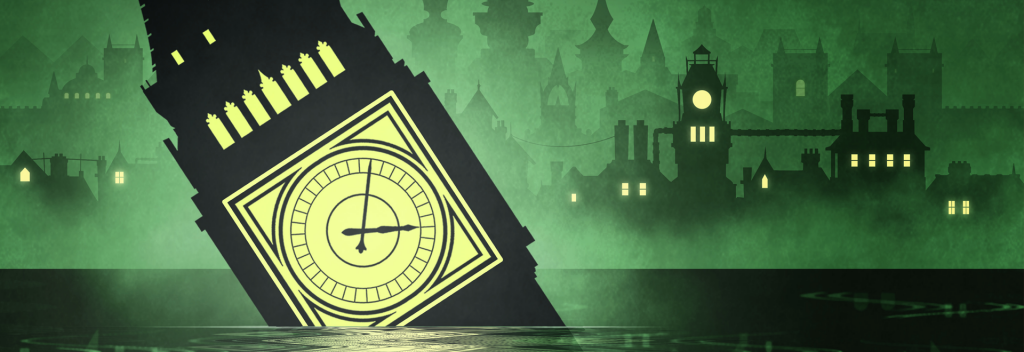
I’ve stopped talking about quality-based narrative, I’ve started talking about resource narrative
[This is basically a copied/pasted Slack post from a discussion I had with the team on a client project. I’ve tidied it up for the blog, but I haven’t rewritten it.]
‘QBN’ [quality-based narrative] – I coined this term, but I now wish I hadn’t. It’s not a term more than like two hundred people will ever use, so ultimately I’m not much bothered. But here’s why I’m bothered, and here’s a term I’ve started using instead.
(1) trivially, QBN is misleading because it sounds like it should mean ‘narrative that depends on being high quality for its effect’.
(2) More importantly, the fundamental characteristic of ‘qualities’ in the Failbetter sense is that they are all created equal – PC characteristics are the same as currency amounts are the same as story tracking variables. This was a deliberate design decision I made back in 2009, but now I think it erases too many potentially useful distinctions. And, in fact, the subsequent development of Fallen London, Sunless Sea and other StoryNexus-based games saw many, many attempts to add, or hack in, different ways to describe the value of, and changes to, qualities.
It occurred to me last week that what really turns me on are ‘resource narratives’. By that I mean that there is an explicit narrative with a game-like focus on strategically manipulating a set of limited resources, whether that’s health or social connections [or relationships] or story advancement or something else.
I reckon a key characteristic of a resource narrative is one where the nature and the interrelationship of the resources aligns with the grain of the story, and where events often/preferably emerge in a natural-seeming way from the combination of resource states. So there are still similarities to salience-based narratives, but there is limited or no interest in an AI director or drama management system as an abstract meta-entity – rather on selection and design of resource interactions as a context from which drama should tend to emerge.
That ‘selection and design of resource interactions’ is one of the things I’ve been groping to describe in recent talks (at AdventureX, Brunel, Develop Reboot) as ‘poetic design’.
Here is a quick random eclectic list of things I’d call resource narratives:
- Sunless Sea and Fallen London, natch
- 80 Days
- Darkest Dungeon
- Dwarf Fortress
- FTL
- Hand of Fate
- King of Dragon Pass
- Open world Ubigames: Far Cries and whatnot
- Stellaris
- XCOM, any flavour
- …Cultist Simulator
Here are some things (all of which I like) that I think it is not very useful to analyse/design in resource narrative terms, although they have both narrative and (often) resources:
- Branching narratives, with or without state: Choice of Games pieces, Sorcery!, most Twine work…
- CRPGs: Dragon Ages, Elder Scrolls, Fallouts, Mass Effects, Torment, Witchers…
- Scripted narrative-first games: Firewatch, Gone Home, Her Story, Oxenfree…
- Immersive sims: Dishonored, HITMAN, System Shock…
- Most parser IF.
When I look through that list of noes, another criterion occurs to me: resource narratives are most effective when resources are scarce, reproducible and fungible.



That’s funny, resources is exactly the term I use in a recent article — apologies for the shameless plug. I’ll add that resources need to interact if they are to make for compelling gameplay: the various situations players face should force them to trade or gamble a resource for another. This is where Fallen London got carried away, and suffered for it: too many storylines just add another quality (or three) for their own purposes, instead of tying into the already existing set, and then too many storylets can just be attempted multiple times in a row, with no change in strategy, as long as you meet the requirements.
It’s also interesting how you include a couple of roguelikes in the list of games where the resources you happen to have more of determine how you approach the path to victory, because that’s how my last attempt at the genre ended up working. But it was a coincidence at the time; nowadays I’d be more deliberate about it (and quite possibly botch things as a result).
Anyway, good analysis as usual!
The reproducibility and scarcity elements are in a bit of tension, and a game can effectively end when the tension breaks – either through the player quitting a 4X because no scarcity means no more relevant decisions to make, or a player quitting a roguelike/survival run because going under a resource reproducibility threshold means there is no longer an actual game to play.
Would like to see more on fungibility. I get it on some level – if every damned thing was unique, there’d no point in building up any general mechanisms at all, you’d just handle it all case-by-case or such. But XCOM would be a much worse game if the only resource in it was credits, and you would use these for everything from research to upgrading soldiers. Fallen London, too, would be much poorer if less maddening if its only currency was echoes.
@dweird Oh, absolutely. As I specifically pointed out in my article, too few resources present the opposite problem: you now don’t have enough of them to play against each other. The trick is, therefore, to maintain a balance. And that’s where the game designer’s art lies.
I really like this idea. It would be interesting to hear what you might identify as corollaries. For example, “resources should always be in conflict”? Or “any resource choice is implicity an opportunity cost for some other resource choice?” Similarly, your thoughts on inherently narratively useful resources. That is what resource conflicts might lurk beneath most good stories? Trust and loyalty for example (conflict = betrayal)? Could relationships be viewed as resources?